The ‘80s rocker Eddie Money had a hit song titled I Wanna Go Back – which could serve as the funeral dirge for Lincoln’s unsuccessful attempt to bring back the Continental – a sedan from a long time ago – in the late twenty-teens.
The first Continental was a hand-built special commissioned by Henry Ford’s favored son, Edsel, in the late 1930s. It was intended to be his personal car, a one-of-a-kind made just for him. Edsel wanted something “long, low and rakish” – like the cars he’d seen while vacationing “on the continent” (i.e., in Europe).
He tapped designer Eugene Gregorie to make it so.
The result was a hand-built prototype based on the ’39 Lincoln Zephyr but much less traditionally styled, as most American cars had been styled up to then. It did not have running boards or an abundance of chrome embellishments. Or even a heater. It did have its spare tire mounted on the trunk, in the “continental” style – housed in a body-colored cover. The hood was lengthened by nearly a foot and the body, lowered by several inches.
The centerpiece was a Lincoln Zephyr V12 engine.
The car’s allure was its singularity – and its audacity.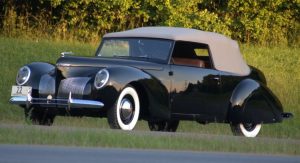
Edsel Ford had made an end-run around his father, Henry – who probably would have said no to building this car . . . had he been asked. So Edsel didn’t. Instead, he had it built it quietly, using Lincoln facilities and personnel who worked on the down-low.
This was easy enough to do at the time because the Lincoln factory was very quiet at that time – due to the still-ongoing Great Depression, which had flattened the market for high-end cars. Few would notice anything going on within the mostly idle Lincoln factory.
What eventually came out – for the 1940 model year – was what architect Frank Lloyd Wright called “the most beautiful car ever designed.”
The first for-sale Continentals.
Others ensued – after Edsel had gone (in 1943). Some were designed by Raymond Loewy, who also designed the last Studebaker – the Avanti – in 1962. Among other things, these were the last American cars sold with V12 engines. These first-generation Connies are regarded by some classic car aficionados as the last of the truly classic cars, whose design predates the modernity of post-war designs.
Even after the war, the Continental was still a special car.
The bodies were hand-finished – and finished without the reams of chrome that characterized American cars of the ‘50s The distinctive hump stamped into the trunk – for the spare, which now rode inside the trunk – began with these Mark II Series Continentals. These came standard with everything except air conditioning – the one factory option. A ’56 Connie was a hugely expensive car, with a base equivalent in 2021 money to nearly $100,000.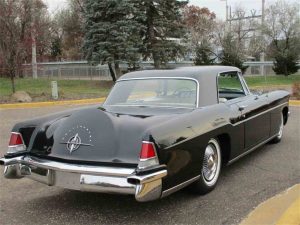
Ford reportedly lost money on each one.
But didn’t give up.
By 1961, the Connie had become the symbol of understated elegance, American-style. Many Americans remember this Connie above all the others – not just so much because of its styling but because of the association with John F. Kennedy, who took his last ride in an open-topped Continental that day in Dallas, so long ago – yet still fresh in many minds.
This version of the Continental is also famous for its so-called “suicide” doors – in reference to their rear-hinging, which allowed them to be opened toward the rear – which (supposedly) left the passengers more vulnerable to being sucked out of the car in the event the door inadvertently opened while it was moving.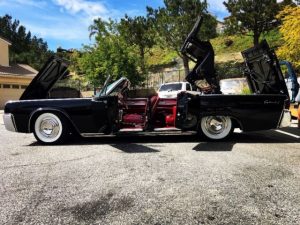
These fourth generation Connies continued in production through the 1969 model year, sticking around just long enough for Neil Armstrong and Buzz Aldrin to set foot on the Moon before the end of the decade – the goal JFK elaborated in his famous 1962 speech.
These were big cars – and they came with big V8s, including Ford’s 460 V8, which to this day remains the biggest V8 Ford ever put into a car. They were also low – about 53 inches at the roofline (a typical 2021 model year car like the Toyota Camry is 56.9 inches tall and most current crossovers – the most popular kind of “car” – are several inches taller than that).
They were also the first – and last – post-war four door convertibles offered by any American car company.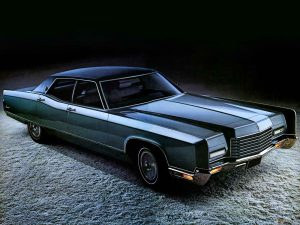
In 1970, the Continental was restyled, with the new style being hardtop coupe and sedan only – with a vinyl roof available. These fifth generation Connies were the heaviest yet, topping out well over 5,000 pounds – comparable to the weight of a current-year full-sized SUV such as a Chevy Tahoe. The hugely necessary 460 V8 remained under the long, pleated hood – which tapered over hidden headlight doors tucked on either side of Lincoln’s trademark waterfall grill.
But the times were changing.
Or rather, the government was applying pressure that would change the Continental, in time – into something the Connie wasn’t meant to be, something that buyers didn’t want. Something much smaller – and more “efficient” – which is as desirable (for a Continental buyer) as downsizing a Porterhouse, if what you want is a big, juicy steak.
By definition, people who bought Continentals didn’t care about “efficiency.” If they did care, they bought something else – like a VW Beetle. What Continental buyers wanted was a car as big as a continent – inside and out.
And under the hood.
But Lincoln was under the gun – literally. The government – which never just asks – was beginning to tell (via the regs) car companies to make their cars more “efficient.” This put pressure on the companies making cars to downsize them – as lighter and smaller translates into uses less gas.
There was also the problem of figuring out how to get cars to emit less of the gasses being emitted that the government was now regulating.
Five thousand pounds – and 460 cubic inches – were as doomed as an ice cream cone on a 90 degree July afternoon.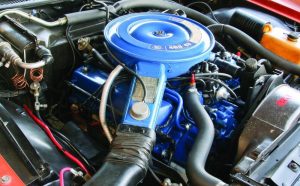
Lincoln held out the longest – maintaining the size of the Continental all the way through 1979 – two years after GM and Chrysler gave in and downsized what had been their full-size cars to what by prior measures would have been classified as mid-sized cars.
But in 1980, Lincoln folded, too – and brought out a downsized, de-powered fifth generation Continental that shared its platform with the Ford LTD and the in-between Mercury Grand Marquis.
Mercury, too, was on the death list by then though it would linger – like grandma at the rest home – for another two decades before Ford finally did the decent thing and put a pillow over its face – and held it there.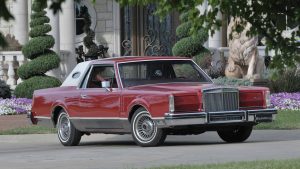
These less-than-continental Connies were the first of the family to come with overdrive transmissions (for “efficiency”) as well as six cylinder engines, one of them a diesel. The gas V8 – available optionally – was a little 302.
These Continentals had shrunk by about two feet overall.
But they still sold not badly – probably because people still wanted what room they could get – as well as rear-wheel-drive, which was becoming hard to get as government pressure forced not only ongoing downsizing but also re-orienting of the drivetrain.
Rear-drive cars have an engine, a transmission bolted the rear to it and a driveshaft extending from the transmission down the length of the car to the axle, in the rear. This balances out the weight of the drivetrain over the length of the car, but it also adds weight to the car – which reduces . . . efficiency.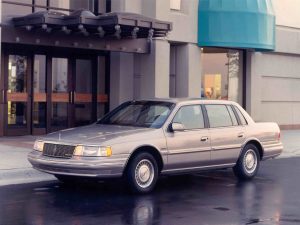
Enter the design change that probably sealed the Continental’s doom.
It became a front-wheel-drive car for the 1988 model year.
But it was more than just that. It had become a bland car. The redesigned eighth generation Connie was – under its skin – a modified Taurus, Ford’s rental car special of the ‘80s.
And you could tell by looking.
As a Ford, the Taurus sold well. But fewer and fewer people were interested in buying a Taurus Halloweening as a Lincoln. Even the signature “continental hump” for the spare in the trunk was gone.
It was also small – just over 205 inches long, hardly . . . continental. It wasn’t low anymore either – the roofline now 55.6 inches, or several inches higher than the sleek and streamlined Connies of better, vanished times.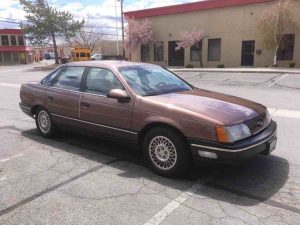
Arguably, the Taurus was the more stylish iteration of the two.
The ’88 was also the first Continental to not even offer V8 power. The standard engine was the same 3.8 liter – initially just 140 horsepower – V6 engine that powered the tore-ass (as the Ford-skinned iteration of the car was not-so-affectionately styled).
In lieu of the now-gone V8, Lincoln installed a pair of airbags for the ’89 model year. Not quite as sexy as suicide doors or a sedan convertible.
That year’s Connie was the first American car to come standard with the in-dash (and steering wheel) Claymores pushed by nag-hag Joan Claybrook when she – “ze”? – was the head of NHTSA, the federal “safety” apparat. The Claymore Claymores would shortly be mandated by the very government that was regulating traditional big sleds like the Continental into oblivion.
The mandatory minimum MPG edicts that had been strong-arming carmakers since the ’70s were really showing their effects, by the mid-late ‘80s – as big American cars continued to get smaller and go front-wheel-drive. This laid the groundwork for what would end up largely replacing the big American car by the early 2000s.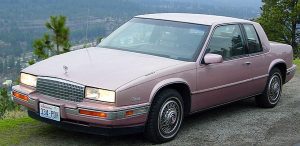
The big SUV.
These vehicles became ascendant because the federally mandated MPG minimums – styled Corporate Average Fuel Economy (CAFE) standards – were differently applied, initially. Cars were held to a a higher mandatory minimum than “light trucks,” a regulatory category that was written into the CAFE folderol to exempt – or at least, not entirely gimp – work vehicles, which is what most people bought trucks for in the ‘70s and ‘80s.
But come the ‘90s, someone figured out that the CAFE regs could be used to end run the gimping of cars – by enclosing the bed of a truck, adding doors and seats – and calling the result an “SUV.” These could be big and roomy – with big V8s under their hoods – and get by the government regs. They caught on like firewood in January and by the twenty-teens had become the vehicles of choice for three out of every four buyers – who by this time were as interested in sedans as people are interested in firewood in July.
In Arizona.
Lincoln was, by the mid-1990s, outselling Cadillac . . . by selling the massive Navigator SUV, which Cadillac promptly imitated with its Tahoe-based Escalade SUV (which was based on the Chevy half-ton pickup, just as the Navigator was based on the Ford Expedition . . . which was an enclosed-bed F-150 pick-up truck).
Everyone else began selling SUVs in lieu of cars.
It was into this unfavorable environment – for cars – that Lincoln decided to try selling a new car, the revived the Continental – which had been cancelled back in ’02 after sales had fallen by about two-thirds vs. the ’95 model year, to just 15,435 examples.
It would prove to be a not-good idea.
The new – and final – iteration of the Connie wasn’t a nice-pricier Taurus. Or even a four-door’d version of the fairly nice Lincoln Mark VII coupe, which had enjoyed brief success in the mid-’80s as a kind of American take on the Mercedes SL (it powered by the Mustang GT’s 5.0 liter HO V8).
It wasn’t a bad car.
It just wasn’t . . . continental enough.
It wasn’t big enough – or bold enough. You could call it attractively nondescript. 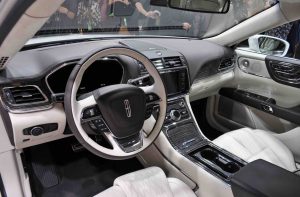
Just over 201 inches long, it wasn’t much larger than the mid-sized cars of 2017 – the first model year for this last Continental. It was smaller than the handful of full-size (by the standards of the late twenty-teens) luxury sedans it would attempt to pull buyers away from, such as the Mercedes S-Class, BMW 7 and Audi A8. These cars were all offered in both long and even longer-wheelbase versions that made the Continental seem . . . not exactly continental.
And these rivals still came with V8s.
Two of the three – the Benz and the BMW – were still rear-drive, too. Which by the twenty-teens had become a major prestige point since practically every other car available was based on the less-prestigious, economy-oriented FWD layout.
Which Lincoln chose as the layout for the ill-fated 2017 Continental.
The last-gasp Connie came with three V6s, two of them boosted by a pair of turbos. The output of these engines was considerable – 335 horsepower for the step-up 2.7 liter V6 and 400 for the top-of-the-line 3.0 liter twice-turbo’d V6. Objectively, these engines made much more horsepower than any of the classic-era Connie’s V8s summoned – even the mighty 460 of the late ‘60s.
Equipped with the 3.0 twin-turbo’d six, the last-of-the-Connies was capable of explosive acceleration.
It could achieve 60 MPH in just 5 seconds.
But this missed the point – of the Continental. Which wasn’t about speed. It was about a different time.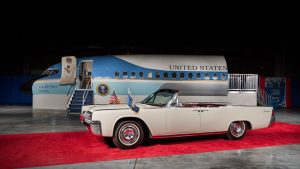
When JFK was in the White House, an open-topped Continental limo felt right for those times. That last slow drive down the streets of Dallas was the sort of thing you did in an open-topped, suicide-door’d ’62 Continental. A causal cruise, in style – feeling good about the world.
Until that world ended with the crack of a rifle – which marked the beginning of a new time.
That time may come again, one day. But for the last of the Continentals, it ended with the twenty-teens, in 2020 – when just over 5,200 of them left Lincoln dealerships. Which have since stopped selling Lincoln cars altogether.
The brand is now an entirely SUV brand.
The last Continental lasted just three years – about the same as Camelot.
. . .
Lincoln Continental Trivia:
-
- The Continental of the late twenty-teens never sold more than 12,012 examples – in 2017 – which was about 3,000 fewer cars sold the last year of the previously worst year for Continental sales, back in 2002 – when 15,435 were sold.
- By 2020 – the final year for Continental sales, period – sales had fallen by almost two thirds to just 5,262 examples.
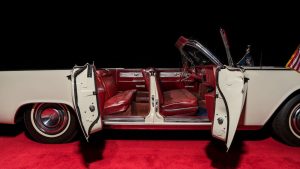
- Just before the lights were turned off, Lincoln made a handful of specially-built Continentals with suicide doors. About 200 of these “coach” editions were made for the 2019 and final 2020 model year. These cars had a six figure base price, comparable (in inflation adjusted money) to the price of a ’56 Continental.
- Although the iconic “continental” trunk bulge was not revived, Lincoln did resurrect an iconically Lincoln method of gear selection. Rather than a lever, there were push-buttons for Park, Reverse, Neutral, Drive – and Sport (which as in many modern cars triggered the car’s computer to sharpen up the feel of the transmission’s gear changes). .
- The final Continental was available with either front-wheel-drive or all-wheel-drive, depending on the engine chosen.
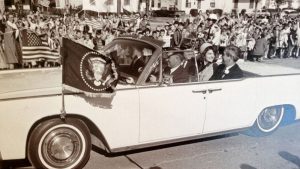
- Although not an especially big car on the outside, the last Continental was the roomiest of the run on the inside. It boasted nearly 42 inches of backseat legroom – which was about 2 inches more legroom than JFK’s Connie had. The ’17-’20’s 16.7 cubic foot trunk was also bigger than the classic early ’60s Connie’s, which had 15.5 cubic feet of capacity.
- Torque output of the final Connie’s top engine – the 3.0 liter V6 with twin turbos – was 400 ft.-lbs. at 2,750 RPM. A 1962 Connie’s big-block V8 developed an advertised 465 ft,-lbs, at 2,000 RPM.
Excerpted from the forthcoming (soon!) book, Doomed.
. . . .
Got a question about cars, Libertarian politics – or anything else? Click on the “ask Eric” link and send ’em in! Or email me at EPeters952@yahoo.com if the @!** “ask Eric” button doesn’t work!
If you like what you’ve found here please consider supporting EPautos.
We depend on you to keep the wheels turning!
Our donate button is here.
If you prefer not to use PayPal, our mailing address is:
EPautos
721 Hummingbird Lane SE
Copper Hill, VA 24079
PS: Get an EPautos magnet or sticker or coaster in return for a $20 or more one-time donation or a $10 or more monthly recurring donation. (Please be sure to tell us you want a magnet or sticker or coaster – and also, provide an address, so we know where to mail the thing!)
My eBook about car buying (new and used) is also available for your favorite price – free! Click here. If that fails, email me at EPeters952@yahoo.com and I will send you a copy directly!











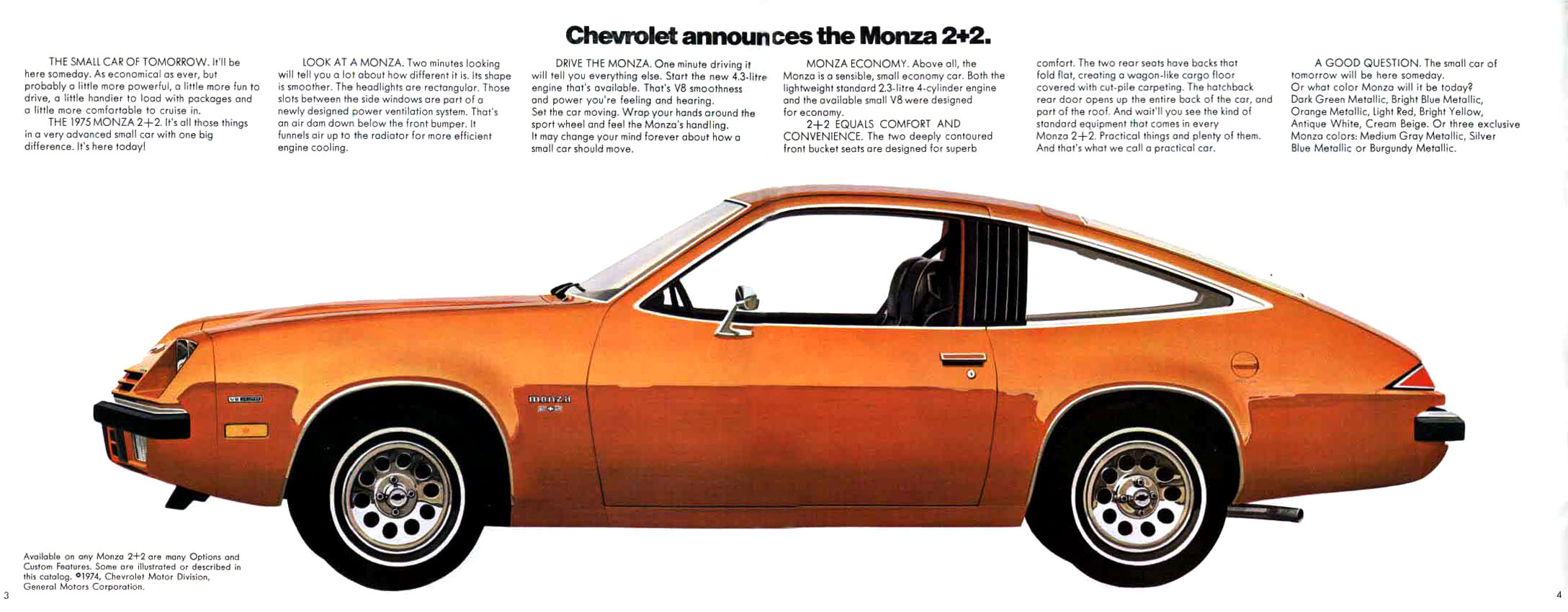
Hawaii Five-O, the original, is in reruns every weeknight on MeTV+, the second MeTV channel on some cable systems like FioS. Great story on McGarrett’s Mercs and where they are now. I never got over that copter shot of Jack Lord standing at the top of the I. (The Ilikai, the glam hotel of downtown Honolulu at the time).
Back in the early 80’s I had a 1973 Lincoln Town Coupe. Big old tank, with the four-barrel 460. At the time I was in the service, stationed on Guam. The salt air and humidity there would rust out a car in a couple of years, and this one had been on the island a lot longer than that. I loved that car. Other than having terminal cancer, it was totally straight and had a clean interior. It met its demise in a parking lot. Hit the stop just a little too hard, folded in the right front wheel, that’s all she wrote. Wouldn’t mind finding another one. Would make an interesting hot rod.
Hi Keith,
As an Xer, I grew up surrounded by these American deadboughts and have so many great memories of them. I would love to have one now, if only I had the room in the garage and the money in the bank!
Man I really liked the new suicide door continental – always thought if I ever end up in the US would try to get my hands on one !!
BTW its funny how you say “little 302” – now, the 302 (or 5.0 out here) is probably the biggest engine one can get on anything, which itself is going extinct (even land rover has ditched the 5.0 v8 for a 4.4 v8 in the new Range).
a owned a 1977 mercury cougar xr7 which was the same size, platform as the 1977 lincoln i think, it had the 400 c.i. V8, weighed 4700 lb., a tank, it was a bit scary over 70 mph on the highway, on corners it was not great, at traffic lights it was good, just floor it with all the low end torque, it got maybe 8 mpg in the city, it was cool to drive…..with the price of gas now you would go broke…
someone said people were buying full size pickups to get that low end torque feel that the big rear wheel drive full size cars had in the old days. maybe also to have lots of metal around them in a crash. i used to drive 5 ton trucks, people respect, stay away from large vehicles… i have a super 7, it weighs 1200 lb. you have to watch out for larger vehicles, they will force you out of their way…responsiveness, agility and ease of instant direction change saves you…the old full size cars were fun in their own way…a friend from italy bought an old cadillac with a 472 c.i. engine, he loved it, there weren’t many in italy and an engine that big was very different from he was used to.
I think if we go back to when this Continental was introduced, the sediment here was that Lincoln was bringing out a very nice car, but it wasn’t worthy of the name. That Lincoln really needed to go BIG (not just the size, though it should have been) with bringing back a Continental. Compete with the Bentleys and Rolls Royces, since they are the only big powerful cruising cars left.
I have only seen them on the roads two or three times, and I live in the Chicago area. So they sure didn’t sell here. Either that or they just don’t stand out enough to be noticed….My friend with a livery business considered buying them, but ended up with Caddies. I think Ford didn’t really want it as a fleet car.
I wonder if they considered calling it a Town Car, bringing back that name from the 80’s and 90’s. To be honest I don’t think it was even worthy of carrying that name even. The Town Car was at least pretty big and V8 powered. I wonder why Ford chose Town Car back then (since it had been a trim level on the Conny before that) It was more Conny then the car they put the name on back then.
When I was a kid I remember one of my neighbors who was a manager at the Torrance avenue (Chicago) Ford plant having a light blue Town Car. We thought that was a nice car, but of course that was the 1980’s ha ha.
Don’t see Ford trying again with either Continental or Town Car anytime soon. The political climate has to change to really see Halo type cars again. Maybe they will slap the name on some totally unrelated electric vehicle like they did with Mustang…….
“I wonder if they considered calling it a Town Car, bringing back that name from the 80’s and 90’s. To be honest I don’t think it was even worthy of carrying that name even. The Town Car was at least pretty big and V8 powered. I wonder why Ford chose Town Car back then (since it had been a trim level on the Conny before that) It was more Conny then the car they put the name on back then.”
They were planning on the downsized platforms becoming the status quo, hence why the flagship Continental nameplate was moved. Even though it was smaller, it was the most expensive Lincoln sedan. The 1990 Town Car redesign almost didn’t happen.
Honestly I see no reason ford or an american brand cant compete with a company like say Bentley, given now its mostly about the tech (mostly outsourced and purchased from cheap Asian manufactures), and even names like Bentley share common parts from the bins Volkswaken Audi, some even have common frames (like the Q7 and the Bentayga). I guess either its the political climate as you say, or management just couldnt be bothered, and are using all their energies on pushing the plebs into electrics….
As an unreconstructed Alabamian, I wouldn’t own anything that contains the word “lincoln” in the first place.
Henry Leland had a penchant for naming his companies after reprobates.
The Tyrant Dictator Abraham Lincoln meet his proper and fitting end, in a public execution.
Unfortunately, it was just about four years too late for the over 700,000 he was responsible for murdering.
What shall we do about the current conflict with the lethal injection pressure???
Hi Saxon,
Yup. I have always thought that the Confederates at First Manassas made the mistake of not pressing the case. They had the initiative. They could have occupied the federal capital and perhaps even captured the tyrant – who was not especially popular in the North. Instead, they made the same mistake the Germans made at Dunkirk. They allowed the routed enemy to survive, to fight another day. Allowed the North to gather up its superior strength in resources rather than strike – hard – while they were in disarray.
I’ve learned that when you’re forced to fight, fight to win.
Eric, Stonewall Jackson begged Jefferson Davis for 20,000 troops at the time to do just that. Davis refused. The Dunkirk analogy is apt. Don’t allow your enemy to get back up.
Indeed, Mark –
And had Jackson been at Antietam, it is probable the Army of Northern Virginia would have won decisively and then won Southern independence.
IMO, they should build a new Conti on the Aviator/Explorer platform (not Navigator platform). I’ve always hoped for such, and think it would do well. Lincoln has done a great job on their new SUV’s, IMO.
I have pictures from March 2019 of what looks like a new Crown Vic under shrouding rolling through the streets of Chicago. Ford was definitely contemplating a car based on that platform, but the Orange Man was still dithering about what to do with CAFE at that time.
Not all of the police are happy with the Explorers. I know Austin cops had visibility issues just watching them try to maneuver the SUVs downtown.
They had plans to put the next-gen Continental on that platform, but it got canceled because the eeeeelectrification race was became a more important priority. They had plans to build a slew of models on that platform: a new Thunderbird, a new Mark Series coupe, and a Lincoln Zephyr sports sedan. What a shame.
Lincoln managed to hold out until 1979 with the big Lincoln/Mercury platform in part thanks to the original “Hawaii Five-O”.
My father was a Ford lifer and claimed that putting Jack Lord behind the wheel of the 74 Marquis was one of the most important product placements the company ever made.
Ford sent new cars to Hawaii every year, more strategic placements that kept the showrooms busy, but McGarett drove the 74 until the day he arrested Wo Fat.
Hi Roscoe!
Thanks for reminding me of that; you’re right – best product placement ever… next to the Trans-Am in Smokey & The Bandit!
Speaking of product placement the Lincoln put in the crusher by Odd Job (with James Bond inside) in “Goldfinger” has got to be a classic.
Eric, you skipped over the early 1990s Lincoln Continental LSC. Not barges but true personal cars a la the original Buick. Riviera with classic lines and plenty of power. It helped to be 5’9″ as the then boyfriend was because those interiors like most Fords were tight. I cried when he gave it up after 200k miles. The Lincoln that replaced it with the rounded lines was a disaster but by that time I had pulled chocks.
BTW my brother pulled up in our ’71 Eldorado convertible next to a ’70 Lincoln at the Macungie PA car show and the Lincoln was larger! (But with a smaller engine in that the Eldo is 500 ci)
Indeed, Dee!
I actually (briefly) owned an ’87 Mark VII LSC with the 5.0 HO V8. A great-looking, problem-plagued car. Don’t get me started on the air suspension…. 🙂
interestingly, Hawaii Five-O used 3 different Mercury vehicles: a 1967, a 1968 and a 1974.
A tale of McGarrett’s Mercury:
http://www.fiveohomepage.com/50mercury.htm
More information on McGarrett’s vehicles:
http://www.fiveohomepage.com/McGarrett'sCars.htm
“Aloha, baby”